When choosing home interior furniture and designs for a home, there are many different market materials. One of the key materials used in home décor is solid wood. However, the major disadvantage of this material is that it is costly. Today, furniture manufacturers are looking for new ways to cut down costs by using cheaper materials. The two alternative materials used in home décor are MDF and particleboard.
Both these home interior materials are made up of combining different types of elements. This blog will discuss everything about MDF and particle boards, including the difference between the two.
MDF Vs Particle-board: What is the Difference?
| MDF | Particle-board | |
| Look | MDF has a smooth finish as it consists of wood grains that are of the same size. | Particle-boards do not have a smooth surface as they consist of wood shavings and chips. |
| Density | MDF has a higher density level than particle-board. | Particle-boards have a lesser density level. |
| Strength | MDF is fairly stronger than particle-board. | Particle-board is not very strong. |
| Durability | MDF is quite durable. | Particle-boards are relatively less durable. |
| Weight | Heavier than particle boards | Lightweight. |
| Moisture | More resistance to water. | Less resistance to water. |
| Lifespan | MDF can remain in proper condition for up to 10 years. | Particle-boards can last for up to 25 years. |
| Price | Costlier than particle-board. | Cheaper. |
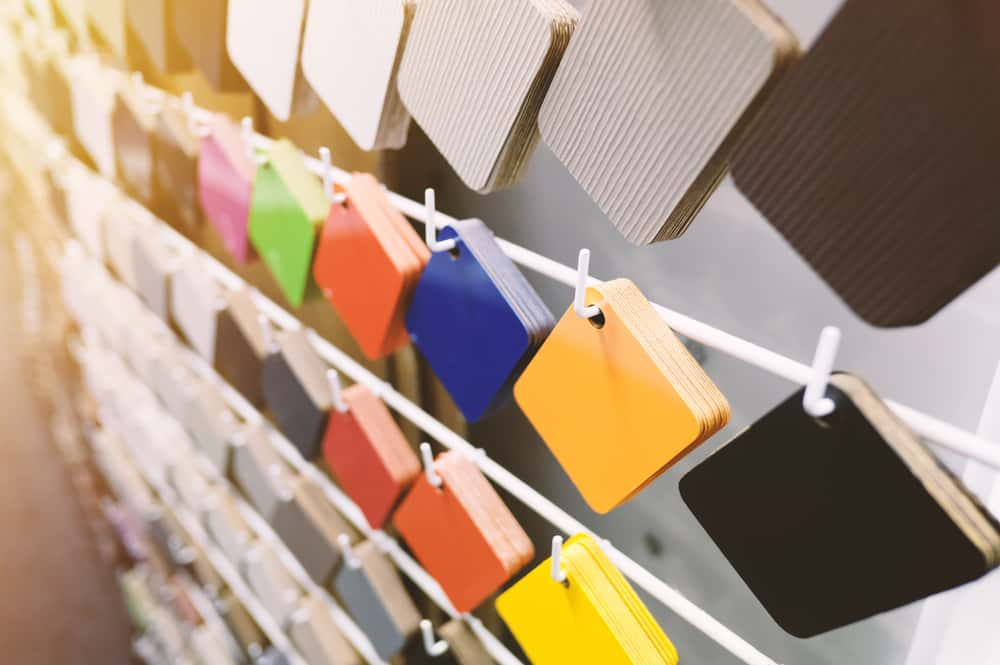
What is MDF?
MDF, the long-form term – medium-density fibreboard, is a type of engineered wood made using wood fibre. The wood fibres are stuck together using glue and then put into a hot machine that compresses the fibres to form a board. It is a great home décor material that is inexpensive. The smooth finish of the MDF board makes it an effortless surface to paint and cut out designs. It’s a strong and dense material that makes it a great choice in home interior designs.
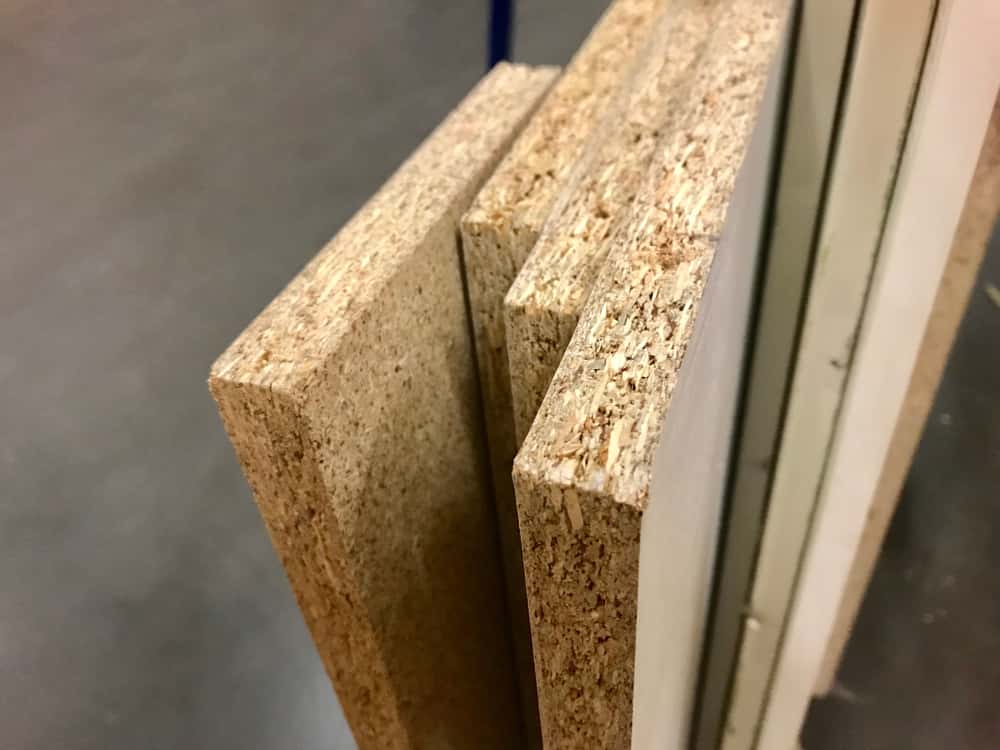
Advantages of MDF
- MDF is inexpensive, so it’s useful for most people looking for cheaper home décor materials.
- The recycling process is used to make MDF. Hence it is eco-friendly.
- Smooth surface.
- It can be easily painted.
- It offers a more realistic finish.
- Solid, flat, and dense material
- MDF is easier to drill and cut into without causing any damage.
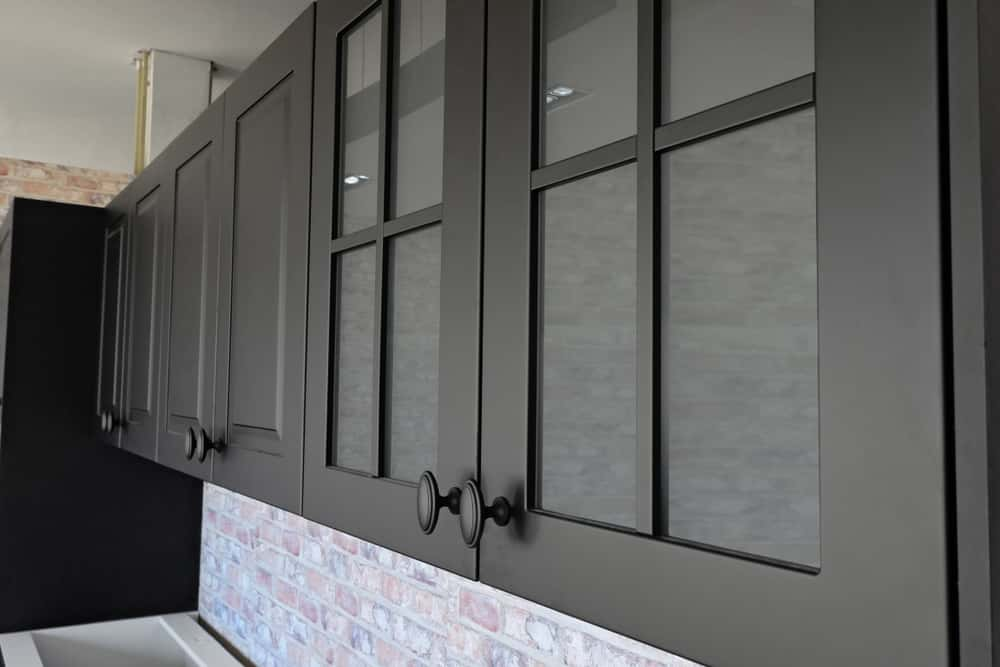
Disadvantages of MDF
- MDF is not stronger than wood.
- When put under stress, MDF can easily split or crack.
- MDF can absorb water faster than wood. So, it is prone to swelling up and causing damage.
- MDF comes with VOC that contains urea-formaldehyde, which can be harmful to the eyes and lungs.
- During the production of MDF, there is a lot of dust released into the air, which can be harmful.
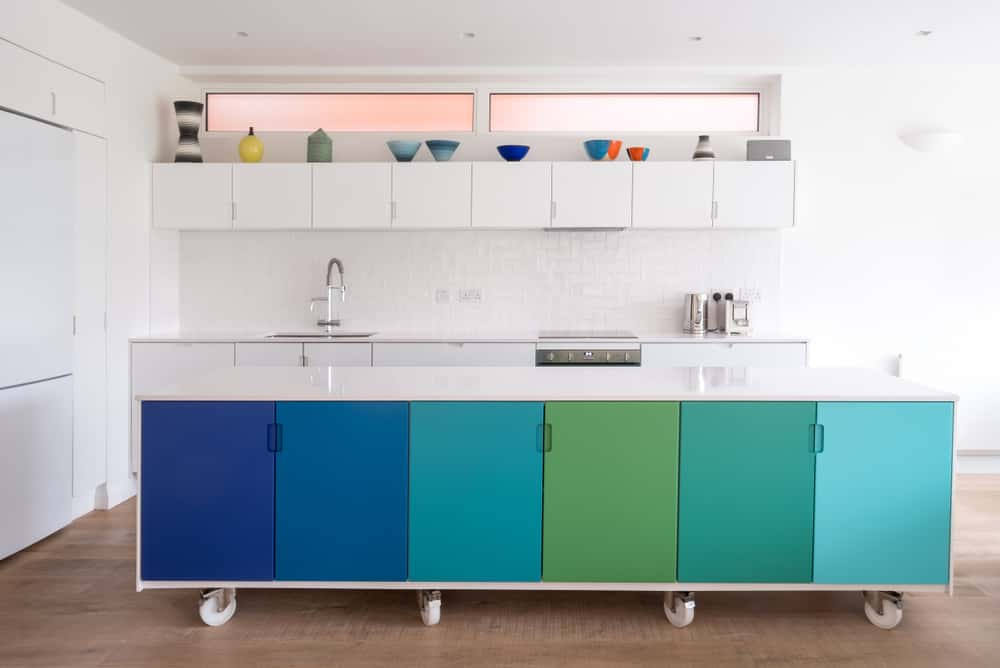
What is a Particle board?
Particle-board is another inexpensive product made using waste wood materials. It is made combining resin and sawdust that’s heat pressed together. Particle-boards are widely used to make low-end home décor furniture. It is also used as an underlying layer for countertops as well. Particle-board can be easily drilled into; however, it is subject to a certain level of tear-out. Laminate or veneer is used to finish a particle board’s surface to give it a better look. It is difficult to shape and mould a particle-board as it tends to break or chip.
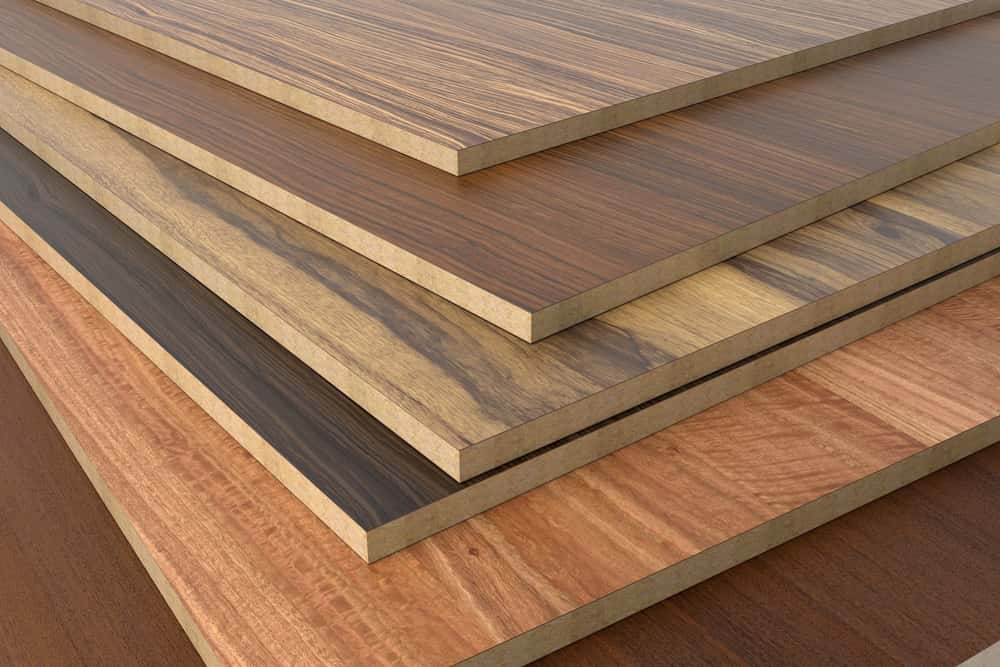
Advantages of Particle-board
- One of the main advantages of a particle-board is that it is low in cost compared to other products like MDF, solid wood, and plywood.
- It is lightweight and can be easily carried and transported around
- When compared to MDF, it can hold nails and screws better.
- Easy to clean and maintain
- It can be easily drilled, cut, milled, painted, glued, etcetera.
- It’s an eco-friendly product made from waste-wood products such as sawdust, wood chips, and shavings.
- They do not come with natural defects like solid wood.
- Particle-boards come with soundproof properties, and that’s the reason they are a good choice for auditoriums, speakers, and theatres.
- The smooth and flat surface allows for easy sticking of veneer and laminate materials. Thin sheets of these materials can be easily glued onto the surface to add to its beauty.
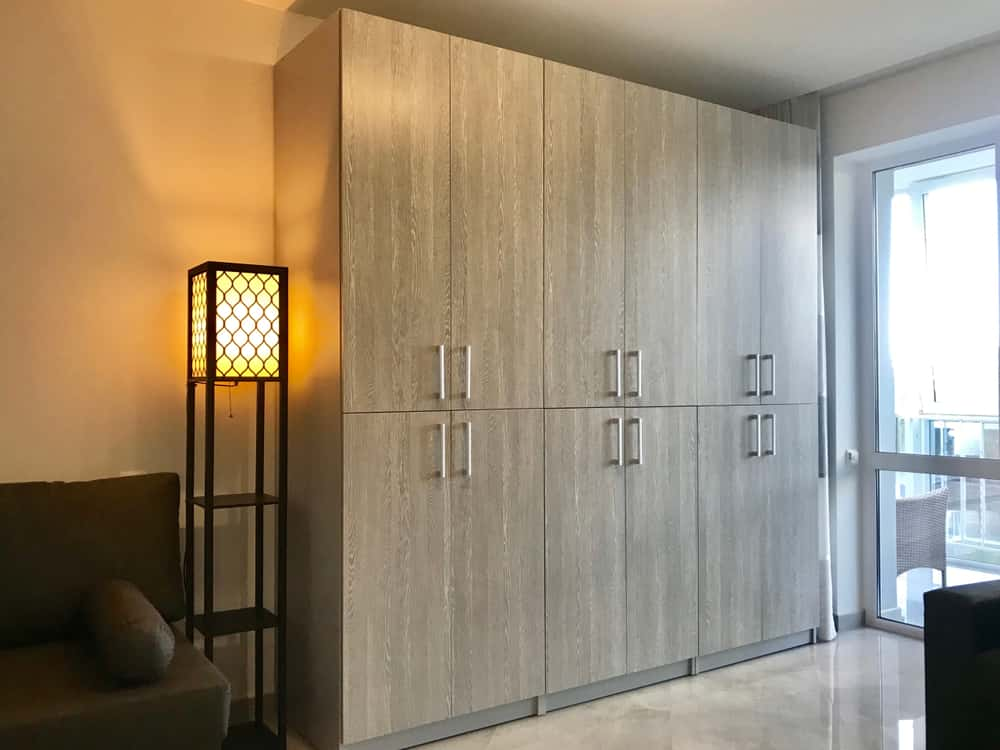
Disadvantages of Particle-board
- Particle-boards are not strong enough compared to other types of home interior materials such as plywood and MDF. Since it’s low on strength, it should be handled with care as easily damaged.
- Particle-boards have low durability.
- It comes with a low resistance to moisture and humidity. It is one of the significant disadvantages of particle boards. Due to moisture, particle boards can expand.
- Not eco-friendly as some types of particle-boards are manufactured using a resin which can be harmful to health.
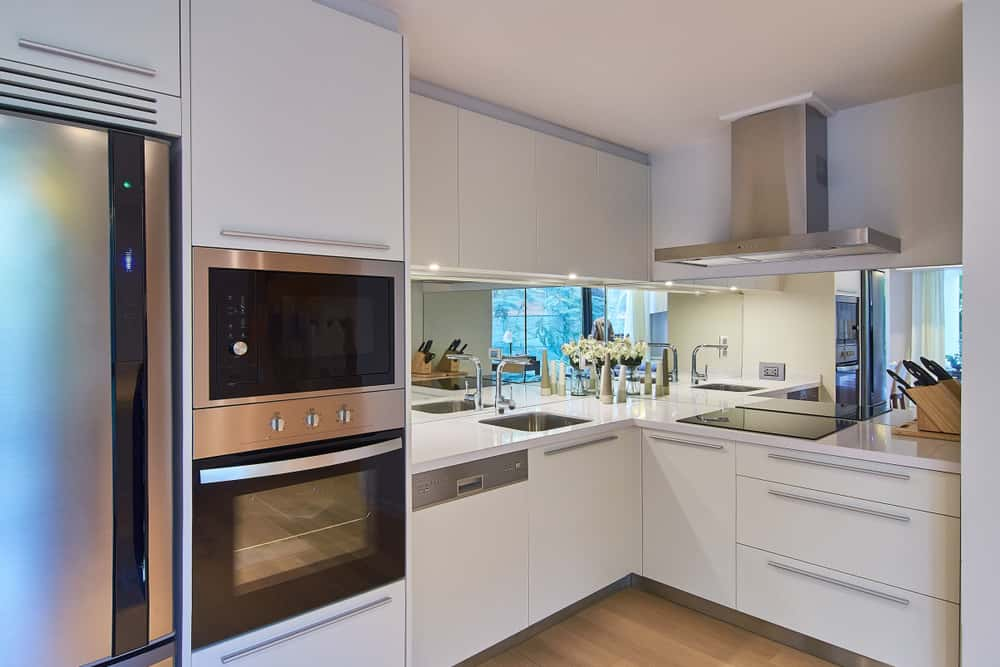
This was everything you need to know about MDF and particle board materials for home décor. When choosing these materials, make sure you select good quality materials that are long-lasting.
If you’re looking for home interior designs for your home that uses MDF and particleboard materials, then get in touch with HomeLane for the best solutions. You can choose from a wide range of incredible designs and get your home interiors customised to your needs.
MDF’s Lifespan
While MDF is a popular choice for furniture and cabinetry, its lifespan is not as extensive as solid wood and depends heavily on several factors.
Under normal circumstances, MDF can last for 10 to 15 years. This timeframe assumes proper use and care, meaning the board should not be exposed to excessive moisture, heat, or weight.
However, there are several factors that can significantly impact this lifespan:
- Quality: Higher-quality MDF, manufactured with better resins and denser fibreboard, will naturally have a longer lifespan than its lower-quality counterparts.
- Moisture exposure: MDF is susceptible to moisture damage. Constant exposure to water can cause warping, swelling, and even mould growth, significantly reducing its lifespan.
- Heat exposure: Excessive heat can cause MDF to warp and lose its structural integrity. This is particularly important to consider in areas near heat sources like ovens or stoves.
- Weight and stress: While MDF can handle moderate weight, overloading shelves or cabinets with heavy items can cause them to sag or break over time.
Extending the Lifespan:
By taking certain precautions, you can maximise the lifespan of your MDF furniture or fittings:
- Seal exposed edges: Apply a sealant, membrane or edge banding to prevent moisture from entering the MDF through exposed edges.
- Maintain proper ventilation: Ensure adequate ventilation in areas where MDF is used, especially kitchens and bathrooms.
- Avoid excessive heat: Maintain a safe distance of at least 5 feet between MDF cabinets and heat sources like stoves, ovens and hot plates.
- Load furniture appropriately: Don’t overload shelves and cabinets beyond their recommended weight capacity.
By understanding the factors affecting MDF’s lifespan and putting proper care measures in place, you can ensure that your MDF furniture or cabinets serve you well for many, many years to come!
MDF vs. Particle Board: Which Should You Use?
Whether you decide to use MDF or particle board depends largely on your specific requirements.
Budget: For cost-conscious projects, particle board offers a budget-friendly option, while MDF provides a premium feel but at a slightly higher price point.
Cabinet type: For face frames, doors, and drawers where a smooth finish is desired, MDF is the better choice. Particle board is better suited for cabinet backs and internal shelves that are not visible, or can be finished with laminate or veneer.
Desired finish: If a smooth, painted finish is important, MDF is the clear winner. Particle boards do not offer a suitable surface for painting.
Moisture exposure: For bathrooms, kitchens, or laundry rooms, MDF with proper sealing is recommended due to its superior moisture resistance.
MDF weight limitations: If weight is a concern, a particle board’s lighter weight might be advantageous, especially for wall-mounted cabinets.
Your HomeLane designer will help you make the right choice of materials that meet your budgetary and design needs.
FAQs
1. Are there any weight differences between MDF and Particle Board?
Yes, MDF’s weight is typically more than that of particle board due to its higher density. This difference can be significant, with MDF weighing around 50% more than particle boards of the same thickness.
2. Can MDF and Particle Board be used in structural applications?
Neither of the two boards has sufficient strength and structural integrity to be used in structural, load-bearing applications. While they may be incorporated into non-load-bearing elements like wall panelling or furniture frames, for structural applications requiring significant strength and stability, you should consider using solid wood or plywood.
Please consult with a structural engineer for more detailed discussions on the suitability of these materials in specific cases.
3. Are there any health concerns associated with MDF and Particle Board?
Some types of MDF, particularly those manufactured overseas, may contain formaldehyde, a volatile organic compound (VOC) that can be harmful to indoor air quality. However, regulations in many countries limit the formaldehyde content in MDF, making it generally safe for most applications. In India, it is required that producers of general-purpose MDF must comply with the Indian standard IS 12406:2021. This ensures that MDF products meet specific technical and quality criteria.
On the other hand, particle boards generally have a lower environmental impact in two key areas. Particle board is often manufactured using low-emitting adhesives and binders, which results in the release of fewer volatile organic compounds (VOCs) compared to some MDF varieties. This can contribute to improved indoor air quality and a healthier living environment.
Again, the production of particle boards typically generates fewer greenhouse gas emissions compared to alternative materials. This translates to a smaller carbon footprint and a more sustainable choice for environmentally conscious consumers.
4. Can MDF and Particle Board be used interchangeably?
Not always. While they share some similarities, their unique properties make them better suited for specific applications. Consider factors like weight, moisture exposure, load-bearing capacity, and desired aesthetics when choosing between MDF and particle board.
By understanding the distinct characteristics and limitations of MDF and particle board, you can make an informed decision and select the material that best suits your project needs and budget.
Popular Services
Modular Kitchen Designs | Home Interior Designs | Wardrobe Designs | Living Room Designs | Bathroom Designs | Space Saving Furniture | Home Office Designs | Pooja Room designs | Foyer Interior Design | Kids Bedroom Design | Interior Lighting Design |False Ceiling | Home Wallpaper | Furniture Design
Popular Locations
Modular Kitchen In Ahmedabad | Modular Kitchen In Mumbai | Wardrobe Designs In Chennai | Wardrobe Designs In Delhi| Interior Design In Mumbai | Interior Design In Delhi
Popular Blogs
Party Ideas for Holi | Assam Type House Design | Pop Designs for Bedroom | Window Grill Design | Plinth Area | Wall Colour Combinations | Vastu Shastra Colors For Living Room | Classical Interior Design | Wardrobe Dimensions | Parapet Design | How To Prevent Dust In Room | Types Of Kitchen | Wall Panel Design | Small Modular Kitchen | Pooja Room Design| HDF Wood | French Door Design | Bedroom Wardrobe | Solid Wood Vs Engineered Wood | Athangudi Tiles






1 Comment
Nice information. Can you tell how many years does pre-laminated particle board furniture can last?